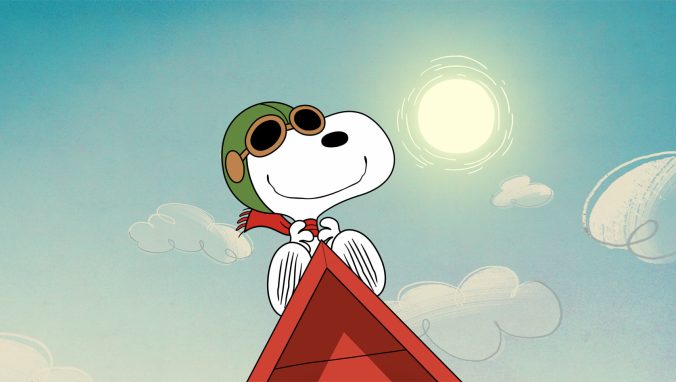The Third Time Is Still a Charm: On the Magic of The Snoopy Show
Photo Courtesy of AppleTV+
Forget Air Bud. Forget Lassie, Benji, Bolt, or Clifford the Big Red Dog. There is one fictional dog who reigns supreme, and his name is Snoopy.
Make no mistake, for this beagle goes by many names—the infamous Joe Cool, for example—but all of America knows him primarily as Charlie Brown’s beloved yet incredibly odd pet. Since his inception in the Peanuts comic strips on October 2, 1950, Snoopy has trotted his way through a plethora of iterations, with the latest being TV.
When you’re a child, Charlie Brown and the gang are iconic and beloved characters watched regularly without much thought; they’re with us each Halloween, Thanksgiving, and Christmas on TV, and crop up sporadically in comic panels and Sunday morning reruns. But as an adult, Apple TV+’s The Snoopy Show offers something much deeper. It’s apparent from watching the new third season, and those that came before it, that this is not a show made solely for kids—it’s for everyone.
In all three seasons of the excellent Snoopy Show, Snoopy is here to teach us lessons about how to live a life without hesitations, and how to utilize our imaginations to the fullest. The show is particularly special because of how nuanced it is; for example, maybe he’ll even teach us a little something about accountability along the way. (Spoiler: He does. Snoopy is surprisingly good at accepting responsibility!)
The Snoopy Show is best consumed slowly as opposed to a binge-watch, and its third season is no exception. It doesn’t matter if you have children or you’re past the age it might be deemed “socially acceptable” to watch a television show about a cartoon dog and his outrageous adventures; The Snoopy Show doesn’t discriminate. It’s a great nightcap before you drift off to sleep, or a 25-minute joy to wind down with after a long, stressful day.
In this whimsical series, there’s no shortage of alter-egos for Snoopy to don with pal Woodstock by his side. The new season finds Snoopy as a pirate, a film noir detective, an ice skater, and a ragged cowboy jaunting around the Wild West with all his belongings tucked into one tiny bag at the end of a stick. In a post-pandemic world, Snoopy is exactly the type of role model we need—we could all stand to take a page from his book and live life a little less bridled with fear or anxiety.
The same sentiment rings true for revving up the dormant part of our imaginations that we slowly begin to lose a little as we grow up and have to ground ourselves into the real world. For instance, in Episode 1, “Happiness Is a Day at the Beach,” Charlie Brown and the gang go to the beach for a sunny day off from school. Snoopy takes advantage of his wild imagination and morphs into a swashbuckling, treasure-stealing pirate; he loots from his friends, has Woodstock as his second-in-command, and prances around the beach looking for trouble.
Whether Snoopy is actually doing these things is a question that will forever go unanswered. It’s difficult to tell whether the iconic Peanuts characters possess some sort of unexplained, undisclosed magical powers that allow them to partake in Snoopy’s wild, near-impossible romps. Perhaps it’s a group hallucination. Maybe Snoopy is just a normal dog, and the kids are the ones who dress him up in outfits and pretend he’s liberated from the usual bonds that keep a dog from being as free-spirited as Snoopy.
-

-

-

-

-

-

-

-

-

-

-

-

-

-

-

-

-

-

-

-

-

-

-

-

-

-

-

-

-

-

-

-

-

-

-

-

-

-

-

-








































